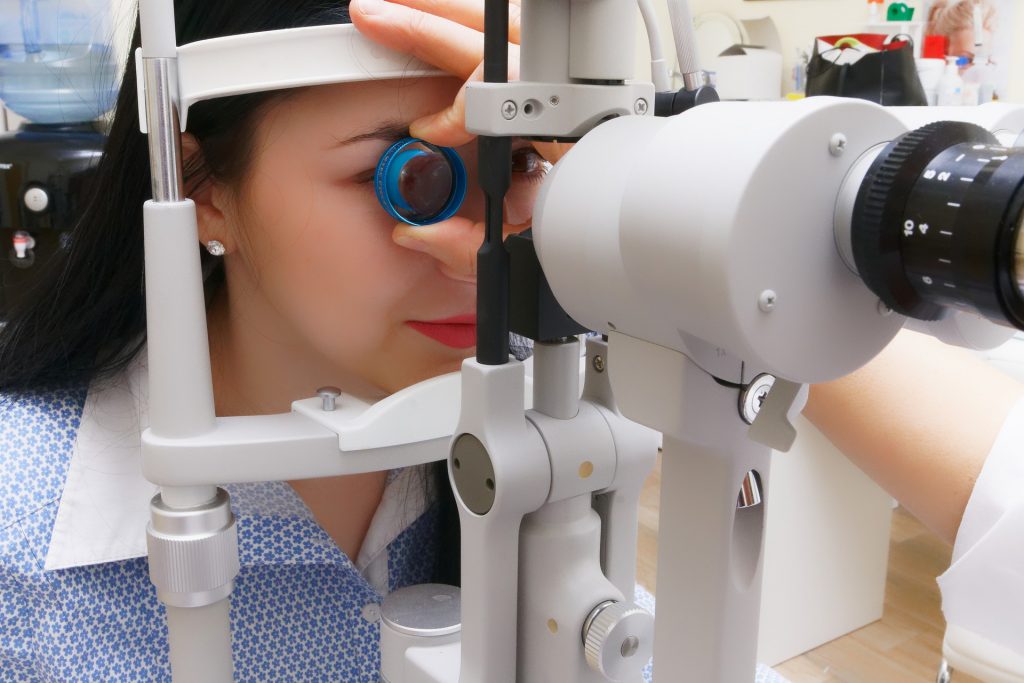Types of Eye Issues
I still remember the time when I got the pink eye and rushed to the hospital to have the proper treatment. I was surprised arriving there as there was so many people and they all had something or another that was causing them trouble. At that moment, I realized that there are many eye issues and diseases that we do not know about. We are more aware of other diseases and unknown to the one that help us see. So, I decided why not talk about it and learn more about the different types of eye issues and diseases and also which optometrist to contact in case of an emergency.

These eye problems include blind spots, blurred vision, halos, and floaters. Blind spots are dark spots or holes in the field of vision in which nothing can be seen. Blurred vision is the inability to see small details as the sharpness of vision is lost.
Changes in vision i.e., halos around lights, blurriness and blind spots always be evaluated by an ophthalmologist. These changes can indicate an eye disease or eye injury. Sudden issues with vision may also indicate diabetes or other condition that affect many organs in the body.
The following types of vision problems can be corrected with glasses or contacts:
Hypermetropia or Farsightedness – this is a common eye vision problem. A person who is farsighted can see far objects clearly but has blurry vision of near objects. The eyes of a person with this condition focus images at a point behind the retina. Farsightedness occurs when the cornea is too flat or when the eye is shorter than normal. Farsightedness tends to run in families and is usually present right from birth. This vision problem can be corrected with the use of convex lenses in eyeglasses or contact lenses. Young people with this eye condition do not always need treatment since the lenses of their eyes are flexible enough to compensate for the problem. Elderly patients however will require corrective lenses to improve their vision. People with hypermetropia or farsightedness can opt for surgery if they want to use this method to correct the problem.
Myopia or Nearsightedness – this is also one of the more common types of vision problems and is usually seen in young children and teenagers. A nearsighted person can see near object clearly but will have difficulty with far objects. In this condition, the light is focused in front of the retina so distant objects become blurry. Nearsightedness occurs if the eyeball is too long or the cornea is too steep. The result is that images are being focused on the vitreous humor instead of on the retina. This vision problem can be corrected by the use of corrective glasses or contact lenses that have a negative optical power. This means that they are concave lenses and they help focus the image on the retina. As with farsightedness, nearsighted people may also opt for surgery for correction if they want.

Presbyopia – among the different types of vision problems, this is a condition that comes with the advancement of age. It can be regarded as a symptom of aging. Presbyopia starts affecting people who are in their early to mid-40s. This eye problem indicates the gradual reduction of the eye’s ability to focus on nearby objects. With increasing age, the lens of the eyes becomes harder and less flexible so close-up images go out of focus. Presbyopia can be treated by prescription reading glasses, bifocal contact lenses, bifocals, trifocals, modified monovision technique and monovision contact lenses. Refractive surgery and lens implants are also treatment option for this type of visual problem.
Astigmatism – people with this problem experience blurry vision at all distances. The irregular shape of the cornea or the lens causes astigmatism. Blurred vision may occur more in one direction: it could be vertically, horizontally, or diagonally. Astigmatism may occur with other types of vision problems like farsightedness and nearsightedness. Eyeglasses and contact lenses can correct astigmatism. Refractive surgery may also be used.
Other vision problem types are much more serious than the ones stated above. The following are types of vision problems which cannot be corrected by glasses or contacts alone. Some of these may even cause blindness.
Cataracts – cataract means ‘clouding; of all or part of the normally clear lens inside the eye. This results in distorted or blurred vision.

Eye floaters – these look like small spots, dots or lines that move through your line of vision. These are actually very small clumps of cell or gel within the vitreous fluid in the eye. These floaters may be an indication of retinal detachment. If you experience eye floaters, it is best to consult an ophthalmologist right away.
Glaucoma – this happens when the pressure of the fluid inside your eyes builds and damages the fibers in the optic nerve. This damage can cause vision loss and if left untreated, can cause total blindness.
Conjunctivis – this is also known as pink eye and it is caused by an inflammation of the conjunctiva. Conjunctiva is the thin, transparent layer that lines the inside of the eyelid and covers the white of the eye. Conjunctiva inflammation is usually the result of a virus and can usually resolve without any treatment. Sometimes however, pink eye is caused by a bacterial infection and will need antibiotics.
Retinal tears and retinal detachment – these are among the more serious types of vision problems that when not treated immediately, can lead to blindness. These conditions affect the thin layer of blood vessels that supplies nutrients and oxygen to the retina. The initial symptom of these types of vision problems is eye floaters.
Macular degeneration – this is caused by changes in the macula portion of the retina. The macula is responsible for sharp and clear vision. This visual problem can cause a blind spot right in the centre of your field of vision.
If you have a family history of eye disease, then you are likely to develop of these types of vision problems. There are also other risk factors like previous eye injury, diseases that affect the whole body like diabetes, premature birth, heart disease, high blood pressure, or AIDS. To know if you have a serious eye problem, you must consult SUMMERHILL OPTOMETRY in Toronto, ON. Early detection is the key to fixing the different types of vision problems. It is also important not to take your eyes for granted and care for them by eating healthy, doing eye exercises, and minimizing activities that can strain the eyes.



